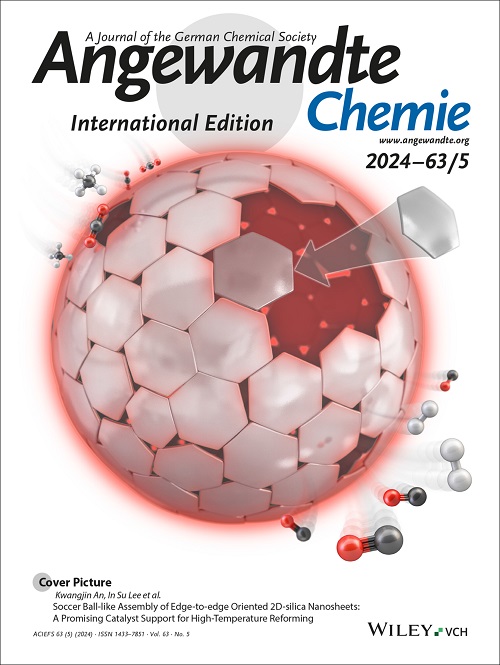Orchestrating Penta-Element Interplay in Gradient-porous Carbons for Advanced Sodium-Ion Hybrid Capacitors.
IF 16.9
1区 化学
Q1 CHEMISTRY, MULTIDISCIPLINARY
引用次数: 0
Abstract
Sodium-ion hybrid capacitors (SIHCs) offer a cutting-edge synergy between battery-level energy density and supercapacitor-like power density, yet face critical challenges in balancing the kinetic and capacity mismatch between Faradaic anodes and capacitive cathodes. Herein, we present a penta-element doped gradient-porous carbon (PE-GPC) with a nanosphere architecture, engineered with high-entropy principles and a gradual pore density variation to enhance mass transport and charge storage. Operando spectroscopy and machine learning potentials unveil a concerted penta-element interplay: Thiophene-like S configurations mediate dynamic redox processes, enabling pseudocapacitive Na+ and anion storage, while fluorine functionalities foster a self-rejuvenating NaF-rich solid electrolyte interphase (SEI), stabilizing long-term cycling. Meanwhile, the synergistic N/B/P triad engineers a hierarchical defect network that enhances electronic conductivity and fine-tunes ion adsorption energetics. This orchestrated interplay empowers the SIHC full-cell with a high energy density of 196 Wh kg-1, a formidable power density (10.4 kW kg-1), and an impressive 88.2% capacity retention after 9000 cycles. By establishing a high-entropy stabilization paradigm, this work paves the way for multi-ion storage architectures, offering a universal strategy to bridge the charge-transfer imbalance in advanced energy devices.先进钠离子杂化电容器中梯度多孔碳中五元素相互作用的协调。
钠离子混合电容器(sihc)在电池级能量密度和类似超级电容器的功率密度之间提供了先进的协同作用,但在平衡法拉第阳极和电容阴极之间的动力学和容量不匹配方面面临着严峻的挑战。在此,我们提出了一种具有纳米球结构的五元素掺杂梯度多孔碳(PE-GPC),采用高熵原理和逐渐变化的孔密度来增强质量传输和电荷存储。Operando光谱和机器学习电位揭示了一种协调一致的五元素相互作用:类噻吩S结构介导动态氧化还原过程,实现假电容性Na+和阴离子存储,而氟功能促进自我恢复的富含naf的固体电解质间相(SEI),稳定长期循环。同时,协同的N/B/P三元组设计了一个分层缺陷网络,增强了电子导电性并微调了离子吸附能量。这种精心安排的相互作用使SIHC全电池具有高达196 Wh kg-1的高能量密度,强大的功率密度(10.4 kW kg-1),并在9000次循环后保持令人印象深刻的88.2%的容量。通过建立高熵稳定范式,这项工作为多离子存储架构铺平了道路,为弥合先进能源设备中的电荷转移不平衡提供了一种通用策略。
本文章由计算机程序翻译,如有差异,请以英文原文为准。
求助全文
约1分钟内获得全文
求助全文
来源期刊
CiteScore
26.60
自引率
6.60%
发文量
3549
审稿时长
1.5 months
期刊介绍:
Angewandte Chemie, a journal of the German Chemical Society (GDCh), maintains a leading position among scholarly journals in general chemistry with an impressive Impact Factor of 16.6 (2022 Journal Citation Reports, Clarivate, 2023). Published weekly in a reader-friendly format, it features new articles almost every day. Established in 1887, Angewandte Chemie is a prominent chemistry journal, offering a dynamic blend of Review-type articles, Highlights, Communications, and Research Articles on a weekly basis, making it unique in the field.

 求助内容:
求助内容: 应助结果提醒方式:
应助结果提醒方式:


